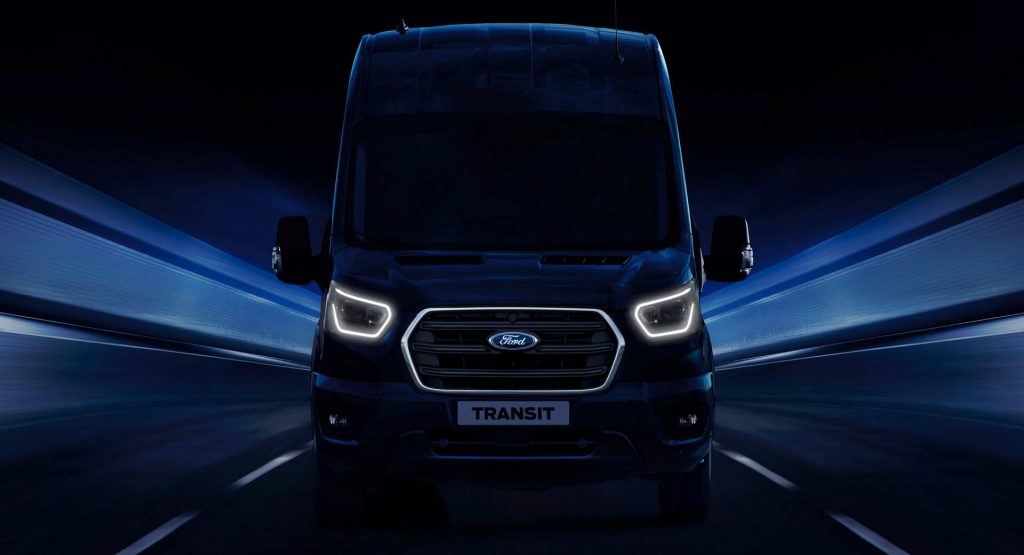Ford is looking to boost its presence in the commercial vehicle market by unveiling its latest generation of connected and electrified Transit vans at the IAA Commercial Vehicle show in Hannover on September 20.
Spearheading this movement is the new two-tonne Transit, featuring a segment-first 48-volt mild hybrid (mHEV) technology, together with the Transit Custom plug-in hybrid (PHEV), which will go on sale sometime next year.
The new two-tonne Transit will pack more fuel efficient engines, increased payload, built-in connectivity and advanced driver technologies when it launches mid-2019. Aesthetically, it comes with a new front end design and an all-new interior with improved stowage space.
Aside from the upgraded 2.0-liter EcoBlue diesel engines, Transit customers will be able to order their van with 48-volt mHEV technology on manual transmission versions, in turn further improving fuel efficiency, especially in stop-start urban traffic. The mHEV system works by capturing energy during moments of deceleration, then releasing it to help drive the engine and electrical ancillaries.
As for the Transit Custom PHEV, it will arrive in Hannover in final production form, equipped with a hybrid system that targets a zero-emission range of up to 31 miles (50 km), while also using a 1.0-liter EcoBoost petrol unit as a range extender. This van’s total range is said to be more than 300 miles (482 km), aided by the compact liquid-cooled lithium-ion battery pack situated underneath the load floor.
“Hannover will mark the arrival of an exciting new family of Transit commercial vehicles that are ‘born connected’,” stated Ford of Europe CV exec, Hans Schep. “Advanced connectivity, and our game-changing electrified vehicles, will create extensive new opportunities to create value for our customers.”
During the show, Ford will also be announcing two new connected vehicle fleet solutions, developed by Ford Smart Mobility. First, Ford Telematics is meant to provide fleet operators with a web-based application aimed at improving vehicle utilization, maximizing vehicle availability and optimizing running costs. Then there’s Ford Data Services, which will enable those same fleet operators to work with their own third-party service providers to access OEM-grade vehicle data.




